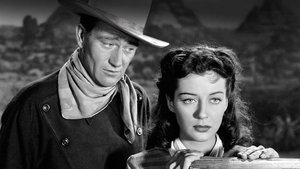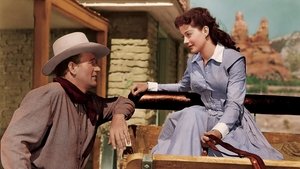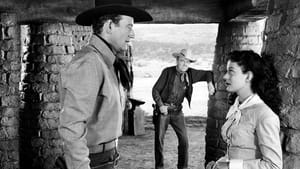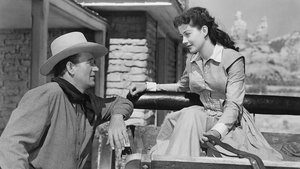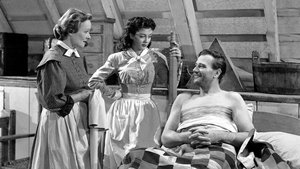Contact: info@alwanfilm.com
Video Sources 0 Views
- Watch trailer
- Angel and the Badman

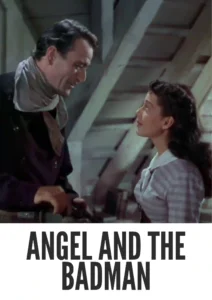
Synopsis
Table of Contents
ToggleReview: Angel and the Badman 1947 Colorized – A Timeless Tale of Redemption and Romance

Introduction
Angel and the Badman, released in 1947, is a classic Western film directed by James Edward Grant. Renowned for its compelling storyline, memorable characters, and sweeping landscapes, this timeless tale of redemption and romance continues to captivate audiences with its universal themes and heartfelt performances. In this review, we’ll delve into the rich tapestry of Angel and the Badman and explore its enduring legacy in the world of cinema.
Check The Full Colorized Movies List
Check Our Colorized Movies Trailer Channel
Understanding Angel and the Badman 1947 Colorized: Director, Cast, and Genre
Directed by James Edward Grant, Angel and the Badman features a talented cast led by John Wayne and Gail Russell. The film belongs to the Western genre, known for its rugged landscapes, stoic heroes, and tales of honor and redemption in the Old West.
Exploring the World of Angel and the Badman 1947 Colorized: Plot and Characters
Angel and the Badman tells the story of Quirt Evans, a notorious gunslinger who finds himself on the path to redemption after being nursed back to health by a Quaker family led by the compassionate Penelope Worth. As Quirt struggles to leave his violent past behind and embrace a life of peace, he must confront his own inner demons and the dangers that threaten to pull him back into a life of crime.
The Art of Film Colorization
While Angel and the Badman was originally filmed in black and white, its early colorized version adds a new layer of depth to its sweeping landscapes and vibrant characters. The colorization process enhances the film’s visual appeal and captures the timeless beauty of the Western frontier with breathtaking clarity.
Early Colored Films: A Brief History
The history of early colored films is marked by innovation and experimentation as filmmakers sought to capture the beauty and grandeur of the natural world. From hand-tinted frames to pioneering technicolor processes, the evolution of colorization techniques transformed the cinematic landscape, offering audiences a new way to experience the majesty of the Western frontier.
Angel and the Badman (1947) and Its Early Colored Version
The decision to release Angel and the Badman in a colorized format was made with the intention of immersing audiences in the breathtaking beauty of its Western landscapes and enhancing the film’s visual impact. While some purists may prefer the original black and white version, the early colorized edition of Angel and the Badman adds a new layer of depth to its sweeping vistas and vibrant characters, capturing the timeless allure of the Old West with stunning clarity.
The Debate Over Film Colorization
The debate over film colorization continues to divide audiences and industry professionals alike. While some argue that colorization breathes new life into classic films and makes them more accessible to modern audiences, others maintain that it compromises the artistic integrity of the original work. As technology advances and filmmaking techniques evolve, the debate over colorization remains a topic of ongoing discussion within the film community.
Examining Angel and the Badman (1947) as an Early Colored Film
Viewing Angel and the Badman in its early colorized iteration offers audiences a fresh perspective on its sweeping landscapes and timeless romance. The colorization process enhances the film’s visual appeal and captures the rugged beauty of the Western frontier with breathtaking clarity. As viewers are transported back to a simpler time, they are treated to a visual feast that immerses them in the timeless allure of the Old West.
Influence and Legacy: Angel and the Badman 1947 Colorized’s Impact on Cinema
Angel and the Badman is widely regarded as a classic of the Western genre that continues to inspire filmmakers and capture the imagination of audiences around the world. Its timeless tale of redemption and romance, coupled with its breathtaking visuals and heartfelt performances, have left an indelible mark on cinema, shaping the way Westerns are made and appreciated to this day.
Director’s Cinematic Legacy: Beyond Angel and the Badman 1947 Colorized
James Edward Grant’s directorial legacy extends far beyond Angel and the Badman, encompassing a diverse body of work that includes acclaimed Westerns such as The Alamo and McLintock!. As one of the most respected filmmakers of his generation, Grant was known for his ability to craft compelling narratives that explored the complexities of the human condition with depth and nuance. Angel and the Badman stands as a testament to his talent and creativity, solidifying his reputation as one of the great auteurs of classic Hollywood cinema.
Themes Explored in Angel and the Badman 1947 Colorized
At its core, Angel and the Badman explores themes of redemption, forgiveness, and the transformative power of love in the rugged landscape of the Old West. Through its compelling storyline and heartfelt performances, the film offers a poignant portrayal of the human experience, challenging viewers to confront their own beliefs about right and wrong as they journey alongside Quirt Evans on his path to redemption.
Reception and Controversy Surrounding Angel and the Badman 1947 Colorized
Upon its release, Angel and the Badman received widespread critical acclaim for its sweeping landscapes, heartfelt performances, and timeless romance. While the decision to release the film in a colorized format sparked debate among purists, its enduring popularity has cemented its status as a beloved classic of the Western genre.
Where to Watch Angel and the Badman 1947 Colorized Online
For those eager to experience Angel and the Badman for themselves, the film is readily available on popular streaming platforms such as Amazon Prime Video, Google Play Movies, and iTunes. Whether viewed in its original black and white format or its early colorized iteration, Angel and the Badman offers a cinematic experience that is both timeless and visually stunning.
FAQs About Angel and the Badman 1947 Colorized
1. Is Angel and the Badman based on a true story?
No, Angel and the Badman is a fictional film that tells the timeless tale of redemption and romance in the rugged landscape of the Old West. While the film’s storyline may draw inspiration from real-life events, its characters and plot are works of fiction.
2. Who starred in Angel and the Badman?
Angel and the Badman stars John Wayne in the role of Quirt Evans, a notorious gunslinger on the path to redemption, and Gail Russell as Penelope Worth, the compassionate Quaker woman who helps him find his way. They are supported by a talented ensemble cast, including Harry Carey and Bruce Cabot.
3. What is the central message of Angel and the Badman?
At its core, Angel and the Badman explores themes of redemption, forgiveness, and the transformative power of love in the rugged landscape of the Old West. Through its compelling storyline and heartfelt performances, the film offers a poignant portrayal of the human experience, challenging viewers to confront their own beliefs about right and wrong as they journey alongside Quirt Evans on his path to redemption.
4. Why was Angel and the Badman released in a colorized format?
The decision to release Angel and the Badman in a colorized format was made with the intention of immersing audiences in the breathtaking beauty of its Western landscapes and enhancing the film’s visual impact. While some purists may prefer the original black and white version, the early colorized edition of Angel and the Badman adds a new layer of depth to its sweeping vistas and vibrant characters, capturing the timeless allure of the Old West with stunning clarity.
5. What is the legacy of Angel and the Badman?
Angel and the Badman is widely regarded as a classic of the Western genre that continues to inspire filmmakers and capture the imagination of audiences around the world. Its timeless tale of redemption and romance, coupled with its breathtaking visuals and heartfelt performances, have left an indelible mark on cinema, shaping the way Westerns are made and appreciated to this day.
6. Are there any sequels or remakes of Angel and the Badman 1947 Colorized?
No, there have been no official sequels or remakes of Angel and the Badman. However, the film’s enduring popularity has inspired countless reinterpretations and homages in various media. Nonetheless, none have captured the sweeping landscapes and heartfelt romance of the original 1947 classic.
7. Where can I watch Angel and the Badman online?
For those eager to experience Angel and the Badman for themselves, the film is readily available on popular streaming platforms such as Amazon Prime Video, Google Play Movies, and iTunes. Whether viewed in its original black and white format or its early colorized iteration, Angel and the Badman offers a cinematic experience that is both timeless and visually stunning.
Conclusion
In conclusion, Angel and the Badman (1947) stands as a timeless classic of the Western genre that continues to captivate audiences with its sweeping landscapes, heartfelt performances, and timeless romance. Whether viewed in its original black and white format or its early colorized iteration, James Edward Grant’s insightful direction and the stellar performances of the cast offer a cinematic experience that is both timeless and visually stunning. As viewers are transported back to the rugged landscape of the Old West, they are treated to a poignant journey of redemption and romance that resonates across generations. Angel and the Badman remains a beloved classic that continues to enthrall and inspire audiences around the world

